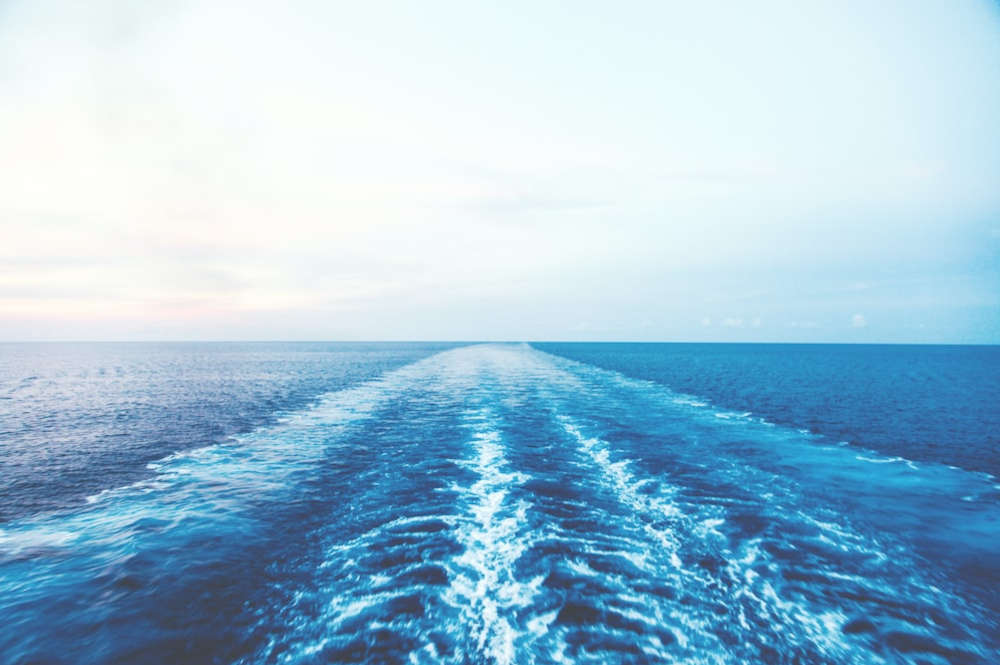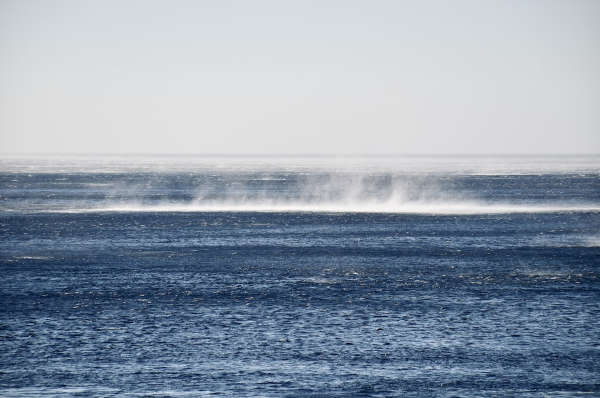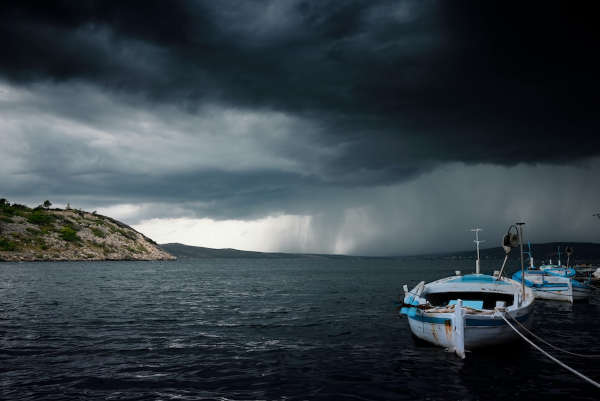
The Croatian Adriatic is known as an area with moderate winds and calm sea. The beautiful and indented coast and the multitude of islands have peaceful harbors and attract numerous sailors from all over the world who spend their vacation enjoying themselves on the Adriatic.
However, before you book and rent a sailboat or a motorboat, it is important to learn about the winds that can occur while sailing. Some of them, such as the maestral (mistral), will provide you with peaceful sailing, while others, such as the bura (bora), jugo (cirocco) or lebić, can be very unpleasant and even dangerous. Before setting sail, it is important to know the winds, their duration and their change of pace, so that you are well prepared. It would be best to hire an experienced skipper who is educated and has experience in sailing the Adriatic and its winds. He will know what winds are blowing, what kind of weather is on hold and if a wind calm is just that, or a sign that the storm is coming.
In spring, northeasterly winds and southeasterly winds prevail. Along the coast and in the open sea, we have periods of wind calm. Strong and stormy winds are not common. In summer, we have an almost regular change of weak to moderate winds. It is usually the maestral that blows from west to east. There are also frequent periods of wind calms (bonaca), when you have to be especially careful because they can be followed by strong and unpredictable storms. Because of the beautiful and calm weather, many sailors relax too much, but it is necessary to be constantly careful because after these summer calms, dangerous storms often come. In autumn, bura and jugo prevail, while winter is dominated by bura, which often shows its true wild nature.
The wind rose of the Adriatic
The rose of the Adriatic winds is divided according to the sides of the world. We have headwinds and tailwinds. The main winds are the bura, which blows from the northwest, and the jugo, which blows from the southeast. Generally, bura, and northern winds bring dry and sunny, but cooler weather, while southerly winds bring warm, humid and rainy weather.
The winds of the Adriatic area:
Nevera or neverin (unexpected storm)
In this article, we will give you a closer look at the winds so that you know what they bring and how to behave in situations when they blow, and whether it is even a good idea to set sail or is it better to wait at a safe mooring.
Bura is one of the most famous winds of the Adriatic and is the exact opposite of the jugo. Bura blows from the northeast and from the land towards the sea. It is the strongest, most unpredictable, and most dangerous wind that blows in Croatia, with gusts of up to 300 km/h. Since bura comes from the land towards the sea and passes over the mountain peaks along the coast, it brings cold, dry air.

The characteristic of this wind is that it starts suddenly, blows in gusts, changes speed and strength, and quickly reaches storm strength. Bura blows along the entire Adriatic coast, but is more frequent and stronger in the northern part of Adriatic coast than in the southern part. It is strongest near Trieste, in the Velebit and Vinodol canals, Novigrad bay, around Šibenik, Split and Makarska, as well as Pelješac peninsula and river Neretva in the south. One of the indicators of the arrival of bura is the formation of a characteristic "cloud cap" on the mountains along the coast. Look at Velebit, Mosor and Biokovo, and if there are clouds on top of the mountains, it means that a bura is coming.
Be careful when sailing during bura and choose to sail in channels which are more distant from the land or in the lee behind the island to avoid gusts of wind and high waves.
Jugo or cirocco is blowing from the southeast and, since it blows from the sea to the land, it brings warmer, wet weather with precipitation. It blows at a steady speed of 21 to 40 km/h, but sometimes it can reach a hurricane speed of 108 km/h. Jugo results in strong waves and rain. There are some signs of jugo starting to blow, which any experienced skipper will recognize. They are a calm sea, weak variable winds, a cloudy horizon, an increase in temperature and humidity, and a gradual decrease in pressure. Jugo, unlike bura, develops slowly and never closes suddenly, which is why it is less dangerous.

However, it can also show its strength and cause big problems at sea, and caution is recommended. It is stronger in the southern part of the Adriatic, especially in the channels (Mljetski, Pelješki, Korculaski, Hvarski, Brački, Splitski and Srednji), as well as near the island of Vis or towards the far south near Dubrovnik. Waves up to 5 meters high can be created, which causes major problems in navigation. Due to the strong jugo, the regular shipping lines that connect the islands to the mainland are often canceled, so be extremely careful.
Maestral (maestral, smorac) is the most famous pleasant light wind that blows during the day from the northwest direction. It blows form spring to autumn and helps alleviate the summer heat. This wind is pleasant for sailing because it is moderate and stable and is accompanied by good weather. The maestral develops in accordance with the day, so in the morning there is only a light breeze, only around noon it becomes stronger, the strongest is in the afternoon and slowly stops in the evening.
In addition to these three most famous winds, it is important to emphasize the appearance of nevera (storm). These are sudden storms that appear at high speed from the open sea and most often from the direction of northwest. Although they last for a short time, they have a strong force and can be very dangerous. They are often accompanied by heavy rain and thunder. Signs of summer storms are calm sea (bonaca), several days of high humidity, high tide, and the appearance and development of white cumulus clouds with increasingly higher and darker clouds, the top of which begins to spread into a stripe.

We have briefly introduced you to the Adriatic winds. Most of the time on our sea the weather is nice and you will have a wonderful vacation in a rented yacht or motor boat. However, it is good to know about potential unpleasant sides and be prepared.
We will receive your complete list of boats and send you inquiry.